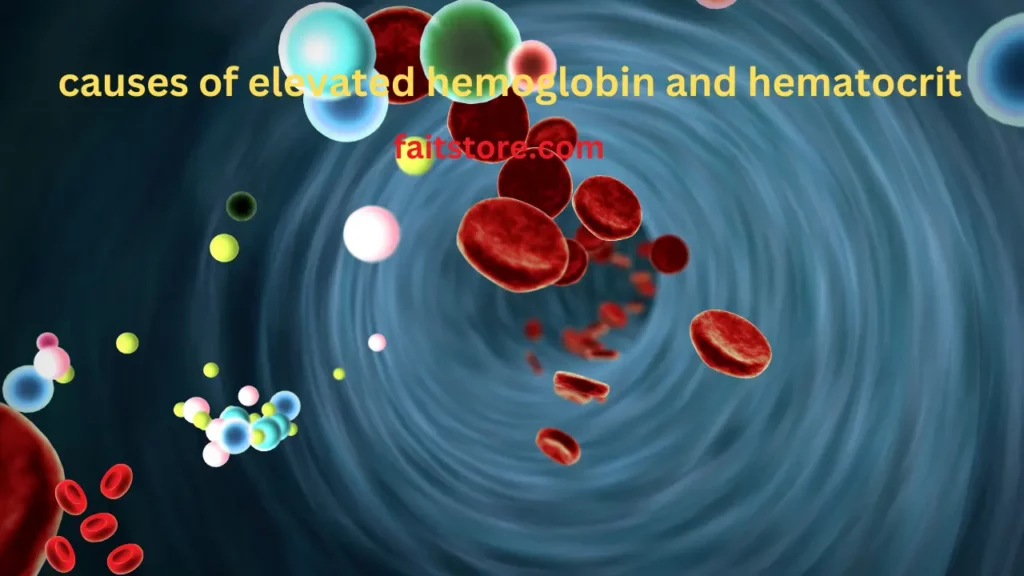Causes Of Elevated Hemoglobin And Hematocrit
Causes Of Elevated Hemoglobin And Hematocrit
Haemoglobin and hematocrit are two important measures that provide information about the health and composition of blood. Elevated haemoglobin and hematocrit levels can indicate an underlying condition or physiological response. This article will explore the causes of elevated haemoglobin and hematocrit, symptoms, complications, diagnosis, treatment, and prevention strategies.
Haemoglobin is a protein in red blood cells that carries oxygen throughout the body. Conversely, hematocrit refers to the percentage of red blood cells in the total blood volume. These measures are crucial in assessing blood health and oxygen-carrying capacity. Causes of elevated haemoglobin and hematocrit.
Haemoglobin and Hematocrit
Haemoglobin and hematocrit are important for blood composition and assessing an individual’s overall health.
- Haemoglobin is a protein found in red blood cells (RBCs): That carries oxygen from the lungs to various tissues and organs throughout the body. It plays a crucial role in the transportation of oxygen and carbon dioxide. Haemoglobin binds with oxygen in the lungs, forming oxyhemoglobin, and releases it to the tissues that need oxygen. It also picks up carbon dioxide from the tissues and transports it back to the lungs for removal from the body.
- Hematocrit: Hematocrit measures the percentage of red blood cells in the total blood volume. It represents the proportion of RBCs in the total blood volume. Hematocrit is determined by centrifuging a blood sample, which causes blood components to separate based on their densities. The packed cell volume (PCV) obtained after centrifugation represents the hematocrit value. A higher hematocrit indicates a higher proportion of RBCs, while a lower hematocrit suggests a lower proportion of RBCs in the blood. Causes of elevated haemoglobin and hematocrit.

Both haemoglobin and hematocrit values are important indicators of blood health and can be used to diagnose and monitor various medical conditions. They are commonly measured during routine blood tests to assess an individual’s overall blood function and oxygen-carrying capacity and to detect conditions such as anaemia, polycythemia, or other blood disorders.
Normal Range of Hemoglobin and Hematocrit
The normal range of haemoglobin and hematocrit can vary slightly depending on age, sex, and specific laboratory reference values. However, here are the general ranges for adults:
Haemoglobin:
- For adult males: The normal range is typically between 13.5 to 17.5 grams per deciliter (g/dL).
- For adult females: The normal range is usually between 12.0 to 15.5 g/dL.
Hematocrit:
- For adult males: The normal range is typically between 38.8% to 50.0%.
- For adult females: The normal range is usually between 34.9% to 44.5%.
These ranges are general guidelines and may vary slightly depending on the specific laboratory’s reference values. Additionally, it’s always best to consult a healthcare professional who can interpret your results and provide appropriate guidance based on your circumstances. Causes of elevated haemoglobin and hematocrit
Causes of Elevated Hemoglobin and Hematocrit with reference
Elevated haemoglobin and hematocrit levels can occur due to various factors, including physiological and pathological conditions. Here are some common causes:
- Dehydration: When the body experiences dehydration, there is a reduction in plasma volume, leading to a relative increase in the concentration of red blood cells. This can result in higher haemoglobin and hematocrit levels.
- High altitude: In high-altitude environments, where oxygen levels are lower, the body compensates by producing more red blood cells. This adaptation increases haemoglobin and hematocrit levels to enhance oxygen-carrying capacity.
- Chronic hypoxia: Conditions that cause chronic hypoxia (low oxygen levels in the blood) can stimulate the production of red blood cells, leading to elevated haemoglobin and hematocrit. Examples include chronic lung diseases like chronic obstructive pulmonary disease (COPD) or certain heart conditions.
- Polycythemia vera: This is a rare blood disorder characterized by the overproduction of red blood cells in the bone marrow. It leads to increased haemoglobin and hematocrit levels.
- Smoking: Smoking cigarettes can cause an increase in haemoglobin and hematocrit levels. The carbon monoxide in tobacco smoke binds to haemoglobin, reducing its oxygen-carrying capacity. As a compensatory mechanism, the body produces more red blood cells, leading to higher haemoglobin and hematocrit levels.
- Certain medical conditions: Some medical conditions, such as congenital heart disease, kidney tumours (renal cell carcinoma), and certain lung diseases, can contribute to elevated haemoglobin and hematocrit levels. Causes of elevated haemoglobin and hematocrit

Comments
Post a Comment